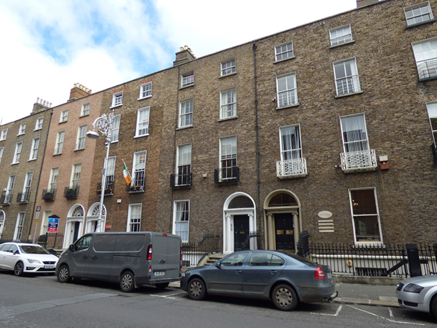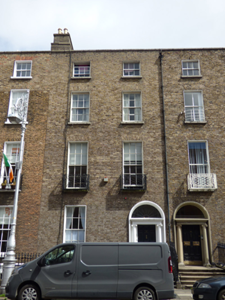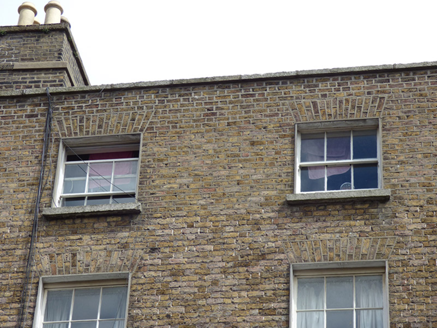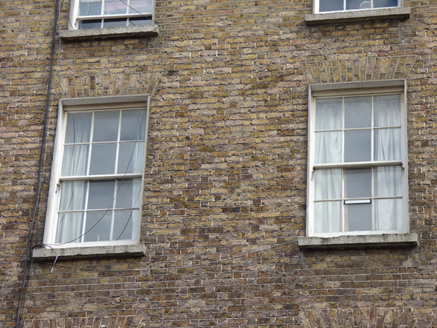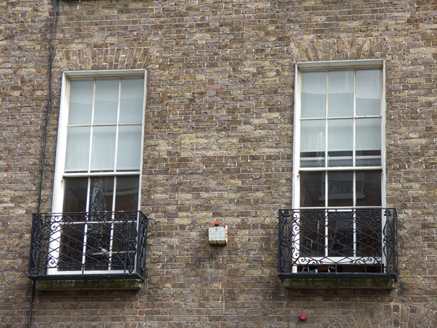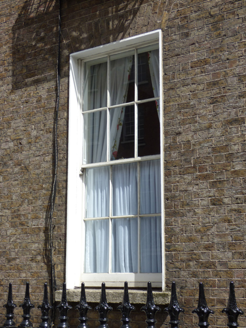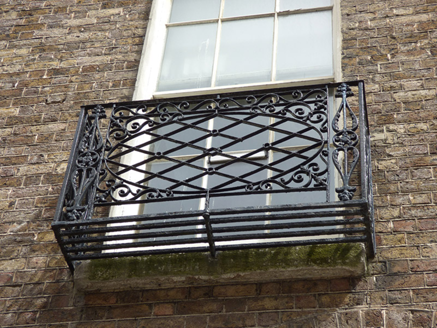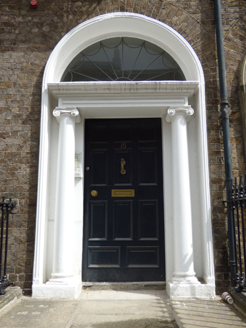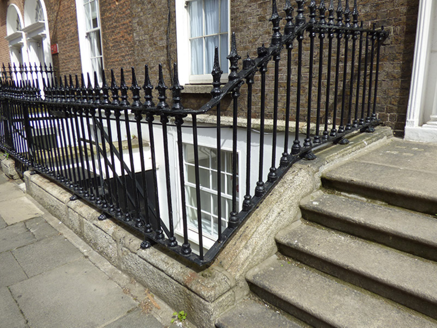Survey Data
Reg No
50100551
Rating
Regional
Categories of Special Interest
Architectural, Artistic
Original Use
House
In Use As
Surgery/clinic
Date
1810 - 1830
Coordinates
316899, 233344
Date Recorded
28/07/2016
Date Updated
--/--/--
Description
Attached two-bay four-storey former house over basement, built c. 1820 as one of terrace of four (Nos. 15-18), having gabled two-storey return to east end of rear. Now in use as clinic and apartments. M-profile pitched slate roof, hipped to east end of rear span, with terracotta ridge tiles, behind brick parapet with granite coping and parapet gutters. Shouldered brick chimneystacks to west party wall with clay pots. Shared cast-iron downpipe. Flemish bond brown brick walling on granite plinth course over painted ruled-and-lined rendered basement walling. Square-headed window openings, diminishing in height to upper floors, with painted masonry sills and painted rendered reveals. Replacement timber sliding sash windows, hornless eight-over-eight pane to basement, ogee-horned three-over-three pane to top floor and six-over-six pane elsewhere. Decorative cast-iron balconettes to first floor. Rear has apparently timber sash bipartite four-over-four pane windows. Round-headed painted masonry doorcase having moulded surround, Ionic columns, entablature with panelled frieze and moulded cornice, replacement leaded fanlight and replacement timber panelled door with brass furniture. Shared granite entrance platform with cast-iron boot-scrape and five bull-nosed granite steps. Decorative spear-headed cast-iron railings on moulded granite plinth enclosing basement area, with cast-iron gate. Cast-iron coal-hole cover to pavement. Replacement door and windows beneath entrance platform. Small garden to rear, large single-storey building to much of rest of plot, and recent two-storey building and yard to rear of plot.
Appraisal
A late Georgian row house, built as one in a terrace of four. The front elevation exhibits well-balanced proportions and fenestration grading typical of the period. The restrained façade is enlivened by cast-iron balconettes, intact setting features and an Ionic doorcase. It makes a strong contribution to the cohesive character of Mount Street Upper and the wider architectural heritage of south Dublin city. The street was built 1790-1834, the variations in the streetscape are indicative of the piecemeal nature of its construction, the north side being notably less grand than the south. The east end of the street is effectively terminated by St. Stephen's Church, creating an interesting centrepiece and terminating one of the key vistas of Georgian Dublin.
